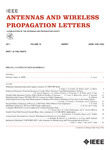
IEEE Antennas and Wireless Propagation Letters
Scope & Guideline
Exploring Innovations in Wireless Propagation Technologies
Introduction
Aims and Scopes
- Antenna Design and Optimization:
Research on the design, modeling, and optimization of various types of antennas, including microstrip, patch, and phased array antennas, focusing on improving performance metrics such as gain, bandwidth, and radiation patterns. - Wireless Propagation Modeling:
Studies that explore the characteristics of wireless propagation in various environments, including urban, rural, and indoor settings, utilizing both experimental measurements and theoretical models. - Metasurface and Electromagnetic Materials:
Investigations into the use of advanced materials and metasurfaces for enhancing antenna performance, including polarization control, beam steering, and compact designs. - MIMO and Array Technologies:
Research involving multiple-input multiple-output (MIMO) systems and their applications in improving communication reliability and capacity, including array design and mutual coupling mitigation. - Innovative Applications:
Exploration of novel applications of antennas in emerging technologies, including 5G, IoT, biomedical devices, and satellite communications. - Machine Learning and AI in Antenna Design:
Utilization of machine learning and artificial intelligence techniques for enhancing antenna design processes, performance prediction, and optimization.
Trending and Emerging
- Metasurface Antennas:
There is a growing interest in the design and application of metasurface antennas, which leverage engineered surfaces to manipulate electromagnetic waves for improved performance and functionality. - 5G and Beyond Technologies:
Research focused on antennas and propagation models specifically tailored for 5G and future wireless communication technologies is on the rise, addressing the unique challenges and requirements of these advanced networks. - Machine Learning Applications:
The application of machine learning techniques in antenna design, optimization, and performance prediction is trending, showcasing the potential for AI to enhance traditional methodologies. - Wearable and Implantable Antennas:
The development of antennas for wearable and implantable devices is becoming increasingly important, driven by the growth of health monitoring and IoT applications. - Dynamic and Reconfigurable Antennas:
Research on antennas that can dynamically change their characteristics based on environmental conditions or user requirements is gaining traction, reflecting the need for adaptable solutions in wireless systems.
Declining or Waning
- Traditional Antenna Types:
Research on traditional antenna types, such as simple dipole and monopole antennas, has decreased as more complex designs and technologies become prevalent. The focus is shifting towards innovative designs that incorporate advanced materials and functionalities. - Basic Propagation Studies:
Basic studies of propagation phenomena without advanced modeling or application contexts are becoming less common. The trend is moving towards more complex, application-oriented propagation models that account for real-world scenarios. - Conventional Materials:
Research involving conventional materials in antenna design is waning as the field moves towards the integration of novel materials such as metamaterials and liquid crystals, which offer enhanced performance and versatility. - Static Antenna Systems:
Interest in static antenna systems is declining as dynamic and reconfigurable systems gain popularity, driven by the need for adaptable solutions in modern wireless communication.
Similar Journals

MICROWAVE JOURNAL
Illuminating Innovations in Microwave ApplicationsMicrowave Journal, published by Horizon House Publications Inc, is a well-established platform in the field of Electrical and Electronic Engineering, specifically focusing on the advancements and applications of microwave technology. Since its inception in 1969, the journal has consistently delivered high-quality research, making it an invaluable resource for professionals, researchers, and students alike. Despite its Q4 ranking in Scopus for 2023, the journal plays a crucial role in disseminating knowledge and fostering innovation within its niche, showcasing developments across various areas including microwave systems, components, and applications. Although it does not offer Open Access, the journal’s comprehensive insights and peer-reviewed articles are essential for anyone looking to deepen their understanding of microwave engineering. By maintaining a rigorous editorial standard, Microwave Journal continues to shape the discussion and evolution of microwave technology.

CIRCUIT WORLD
Illuminating the Path to Engineering InnovationCIRCUIT WORLD, published by Emerald Group Publishing Ltd, is a pivotal academic journal in the fields of Electrical and Electronic Engineering and Industrial and Manufacturing Engineering. Established in 1974, this journal has provided a vital platform for researchers and professionals to disseminate their findings and advancements over nearly five decades. With a notable Q3 ranking in both categorization areas as of 2023, CIRCUIT WORLD emphasizes the importance of innovation and practical applications in engineering. The journal facilitates the exchange of ideas, featuring case studies, reviews, and cutting-edge research that address contemporary challenges in the industry. Although not an open-access journal, it remains dedicated to contributing significantly to the academic community, making it an essential resource for students and professionals committed to advancing their knowledge and expertise in these dynamic fields. With a focus on providing insights into current trends and future directions, CIRCUIT WORLD stands out as a crucial catalyst for scholarly collaboration and innovation.

Advanced Electromagnetics
Fostering Collaboration in Cutting-edge Electromagnetic StudiesAdvanced Electromagnetics, published by ADVANCED ELECTROMAGNETICS, GEEPS-SUPELEC, is an esteemed open access journal dedicated to the rapidly evolving fields of electrical and electronic engineering, as well as materials science, encompassing electronic, optical, and magnetic materials. With an ISSN of 2119-0275 and an established presence since 2012, the journal facilitates the dissemination of high-quality research and advancements, making substantial contributions to the scientific community. Operating from France, the journal proudly holds a Q3 quartile ranking in Electrical and Electronic Engineering for 2023, alongside rankings in Radiation and Electronic Materials. With a commitment to fostering innovation and interdisciplinary collaboration, Advanced Electromagnetics appeals to a broad audience of researchers, professionals, and students, encouraging them to share work that propels the field forward. Enjoy the seamless accessibility of research articles under an Open Access model, allowing for widespread dissemination and engagement with cutting-edge advancements in electromagnetics.

EURASIP Journal on Wireless Communications and Networking
Innovating the Future of Networking SolutionsThe EURASIP Journal on Wireless Communications and Networking, published by Springer, stands as a pivotal platform dedicated to advancing the field of wireless communications and networking. With an ISSN of 1687-1472 and E-ISSN of 1687-1499, this Open Access journal has been disseminating high-quality research since 2004, ensuring broad accessibility for scholars and professionals worldwide. Maintaining an esteemed position in the academic community, it is classified in the Q2 quartile for 2023 across critical categories including Computer Networks and Communications, Computer Science Applications, and Signal Processing. The journal's performance is reflected in its Scopus rankings, which place it in the 73rd percentile for Computer Networks and Communications and the 72nd percentile for both Computer Science Applications and Signal Processing. With a focus on innovative research and practical applications, the EURASIP Journal is an essential resource for anyone seeking to contribute to or stay informed in the dynamic landscape of wireless communication technology.
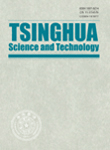
TSINGHUA SCIENCE AND TECHNOLOGY
Advancing Multidisciplinary Research for a Brighter TomorrowTSINGHUA SCIENCE AND TECHNOLOGY, published by TSINGHUA UNIV PRESS, stands as a premier multidisciplinary journal that has established itself as a leading platform for groundbreaking research since its inception in 2003. Renowned for its exceptional quality, the journal currently ranks in the top quartile (Q1) of its category, occupying the 12th position out of 171 journals in the Multidisciplinary field, and boasting an impressive 93rd percentile according to Scopus rankings. Despite the lack of open access options, TSINGHUA SCIENCE AND TECHNOLOGY provides invaluable insights across a diverse array of scientific domains, making it an essential resource for researchers, professionals, and students alike. With a commitment to fostering innovation and advancing knowledge, this journal continues to play a pivotal role in shaping contemporary scientific discourse. For more information or submissions, the journal can be reached at their office located in Beijing, China.

Progress in Electromagnetics Research M
Pioneering Insights in Electromagnetics and MaterialsProgress in Electromagnetics Research M is a prominent journal published by ELECTROMAGNETICS ACADEMY, dedicated to advancing the field of electromagnetics through innovative research, theoretical exploration, and practical applications. With a focus on condensed matter physics and electronic, optical, and magnetic materials, this journal serves as a vital platform for scholars and practitioners seeking to disseminate new findings and methodologies. While it currently holds a Q3 ranking in both aforementioned fields, it offers a valuable contribution to the understanding and development of contemporary technologies. The journal's ISSN is N/A, but its E-ISSN is 1937-8726, ensuring that research is accessible to a global audience. Progress in Electromagnetics Research M aims to foster collaboration and knowledge sharing among researchers, making it an essential resource for anyone interested in the dynamic and evolving area of electromagnetics.
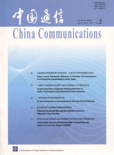
China Communications
Illuminating the Path of Telecommunications ExcellenceChina Communications is a prestigious peer-reviewed journal published by the China Institute of Communications, dedicated to advancing the field of telecommunications and information technology. With an impressive Q1 ranking in both Computer Networks and Communications and Electrical and Electronic Engineering, this journal stands out as a leading source of cutting-edge research and innovative solutions in the engineering domain. The journal aims to provide a platform for scholars and practitioners to share their findings on the latest trends, technologies, and methodologies impacting the communications landscape in China and beyond. It is particularly noted for its high visibility in the academic community, as demonstrated by its Scopus rankings, which place it in the top percentiles for both fields. Through its commitment to quality content, China Communications contributes significantly to the advancement of knowledge, making it an invaluable resource for researchers, professionals, and students alike.
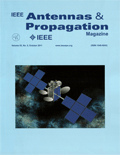
IEEE ANTENNAS AND PROPAGATION MAGAZINE
Advancing Electromagnetic Insights for Tomorrow's InnovationsIEEE Antennas and Propagation Magazine, published by the IEEE Institute of Electrical and Electronics Engineers Inc, is a prestigious journal renowned for its impactful contributions to the fields of Condensed Matter Physics and Electrical and Electronic Engineering. With an impressive 2023 impact factor, this journal holds significant rankings as part of the Q1 quartile in both fields, reflecting its rigorous peer-review process and the high quality of published research. Spanning from 1990 to 2024, it features a wide range of articles including theoretical research, comprehensive reviews, and practical applications in antenna design and propagation. Though it does not offer open access, the magazine remains a vital resource for researchers, professionals, and students seeking cutting-edge insights and advancements in electromagnetic theory and related technologies. Located in the United States, IEEE Antennas and Propagation Magazine is dedicated to fostering innovation and collaboration within the global scientific community, showcasing essential studies that advance the understanding of wave propagation and antenna technology.
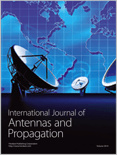
International Journal of Antennas and Propagation
Innovating antenna solutions for tomorrow's challenges.The International Journal of Antennas and Propagation, published by HINDAWI LTD, serves as a vital resource in the field of Electrical and Electronic Engineering, focusing specifically on advancements in antenna technology and propagation mechanisms. With an impact factor that reflects its academic rigor and relevance, this Open Access journal has been inviting submissions since 2007, ensuring that groundbreaking research is accessible to a global audience. Based in Egypt and distributed worldwide, the journal ranks in the Q3 category for Electrical and Electronic Engineering, situating it among the notable platforms for researchers seeking to disseminate their findings or stay abreast of the latest developments. It encompasses a wide scope, welcoming contributions that span theoretical studies, design innovations, and experimental validations, thereby fostering a comprehensive understanding of the subject. As it converges through the years from 2010 to 2024, the International Journal of Antennas and Propagation is a cornerstone for both emerging scholars and seasoned professionals aiming to enhance their knowledge and contribute to this dynamic field.
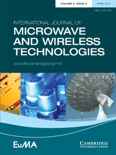
International Journal of Microwave and Wireless Technologies
Empowering Research in Cutting-edge Wireless Technologies.International Journal of Microwave and Wireless Technologies is a leading academic journal published by Cambridge University Press, dedicated to the advancement of knowledge in the fields of microwave and wireless technologies. Since its inception in 2009, this journal has established itself as a crucial platform for researchers, professionals, and students involved in Electrical and Electronic Engineering, currently positioned in the Q3 quartile as per the 2023 category rankings. With an ISSN of 1759-0787 and an E-ISSN of 1759-0795, it facilitates the dissemination of high-quality research articles that address emerging trends and challenges in microwave and wireless communications. The journal is committed to fostering innovation and collaboration within the global scientific community, aiming to publish significant contributions that appeal to both academic and industrial perspectives. Its Scopus ranking of 382 out of 797 highlights its relevance and impact in the engineering domain. While currently not an open-access journal, it provides various access options for its readership, ensuring that cutting-edge research remains accessible to all.